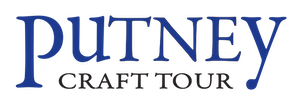Calligraphy, Painting, Drawing & Letterpress
Candace Jensen
Candace Jensen
STUDIO INFO
My studio is a private studio at the In Situ Polyculture Commons Art Barn, a converted 2,000 square foot former horse or sheep barn on Hartley Hill North with a beautiful western view overlooking the mountains toward Grafton, Athens and Chester. I share it with my husband and In Situ Cofounder, Owen Schuh. The remainder of the space is used for artist residences, retreats, workshops and more between May and October.
The barn has a step-up from ground level. A ramp will be available for those who need one. The barn also has a second floor space which visitors are welcome to explore, but no ramp or elevator. The barn is heated.
Located at the top of a narrow drive, parking at the top of the hill on our property is limited. For able-bodied folks who are willing, parking at the bottom of the drive and strolling up the hill can be a good option! For folks with limited mobility or any kind of disability, please drive up to the top where we will have some marked diagonal spaces in front of the barn.
CONTACT Candace
Phone: 484-903-1018
Email: artist.cjensen@gmail.com
Website: www.candacejensen.com
Instagram: @artist.cjensen
Purchase my work
My work is available for sale directly from my studio, by appointment. Email or call to schedule a visit outside of the Craft Tour hours.
Address:
In Situ Polyculture
20 Gordon Heights, Westminster, VT 05158
I am an interdisciplinary artist. I work in calligraphy and text-based work, as well as painting, drawing, printmaking, and writing. I also do letterpress printing, usually for poetry broadsides and prints of my calligraphy. I often combine approaches of drawing and calligraphy with letterpress, or writing by myself and others in my visual essays. Much of my work is rooted in explorations of deep ecology, which are environmental in nature, but also feature philosophy and spiritual connection to place.
I am interested in developing rich and meaningful vessels for our symbolic language to occupy. This is for both present-day communication about important ideas, and posterity. My explicit intent is to expand calligraphic illumination beyond anthropocentrism, or human-centric viewpoints, and to create a cultural reliquary for the recognition and emotive connection to the dire crises of our time; ecological collapse, human cultural estrangement from our ecologies, and climate change from the industrial and capitalist mechanisms of human civilizations.
Both poetry and essay figure into the structure for my visual essays, my own and by other, bards, writers and cultural theorists. I use hand-made inks, herbs, pigments, and gold leaf on paper, as well as print and painting media from traditional illuminated manuscript and book arts.
Emphasizing rewilding and re-enchanting text, my illuminations complicate communication by demanding material and aesthetic consideration of the message. I’m interested in human creative expression coexisting with other intelligences, and this allows the work to illuminate interrelatedness to other beings’ agency; mushroom beings, botanical beings, etc. The message is in the material and is written in the material, on the material. This is an investigation and refutation of nature/culture dualism through the lens of deep ecology and relationality that is grounded in the physical negotiation of image, matrix and media.
Primarily my work concerns itself with text as a visual medium, however I oscillate between writing, visual art, somatic experiments and symposia collaborations (conversations, dialogues, round tables, salons, etc), which braid together in my studio practice and presentation of my work. Ultimately my work is alchemical, seeking to connect macro patterns (above) with intimate grief and more personal, local ecologies (below) through material. It is both art for art's sake, and artivism.




